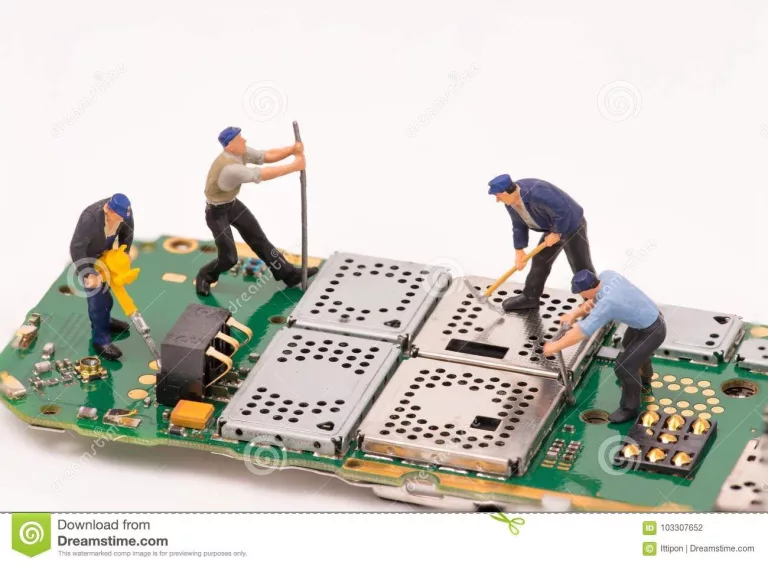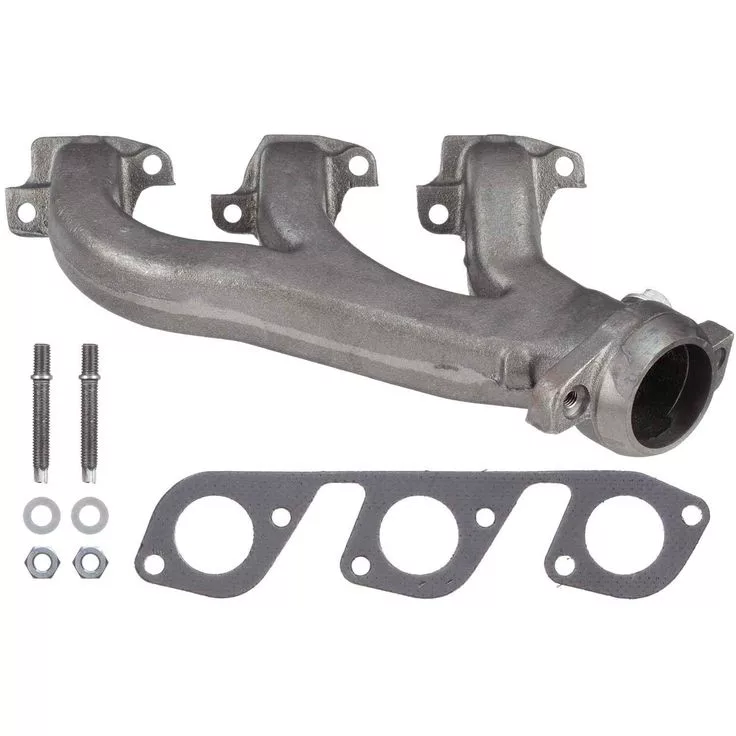An HD coax modulator is a device that allows you to distribute high-definition (HD) video signals over a coaxial cable network. It takes an HD video source, such as a satellite receiver, DVD player, or security camera system, and converts it into a digital format that can be transmitted over a coaxial cable.
Here’s how an HD coax modulator typically works:
- Video Input: The HD coax modulator has one or more input ports where you can connect your HD video sources. These can be HDMI, component, or composite video inputs.
- Encoding: The modulator takes the incoming video signal and encodes it into a digital format. It may use compression algorithms such as MPEG-2 or H.264 to reduce the size of the video data while maintaining its quality.
- Channel Assignment: The modulator assigns a specific channel or frequency to the encoded video signal. This is usually done through configuration settings on the modulator itself.
- RF Modulation: The modulator converts the digital video signal into a radio frequency (RF) signal that can be carried over a coaxial cable. It modulates the digital signal onto a specific frequency band within the cable’s frequency range.
- Coaxial Cable Distribution: The modulated RF signal is then connected to your existing coaxial cable network, commonly used for cable TV distribution. It can be connected to a coaxial splitter or a distribution amplifier to send the video signal to multiple TVs or devices.
- Decoding and Display: At the receiving end, each TV or device connected to the coaxial cable network needs a compatible tuner or receiver to decode the modulated RF signal back into a digital video format. The video is then displayed on the TV screen.
By using an HD coax modulator, you can distribute HD video signals to multiple displays over long distances without the need for additional HDMI cables or converters. It is commonly used in commercial settings, such as hotels, sports bars, or conference centers, where multiple TVs need to display the same video content.
Hd coax modulatoh price
The price of an HD coax modulator can vary depending on the brand, features, and capabilities of the device. Generally, HD coax modulators range in price from around $50 to several hundred dollars.
Lower-priced models typically offer basic functionality and support standard definition (SD) or lower resolution video signals. If you require higher quality HD video transmission, you may need to invest in a more advanced and expensive modulator.
Factors that can affect the price of an HD coax modulator include:
- Video Resolution: Modulators that support higher resolutions, such as Full HD (1080p) or Ultra HD (4K), tend to be more expensive than those limited to standard definition.
- Number of Inputs: Models with multiple input ports for connecting multiple video sources may be priced higher than those with a single input.
- Encoding Capabilities: Modulators that support advanced video encoding standards or provide additional features like audio embedding or closed captioning may have a higher price tag.
- Brand and Quality: Established brands with a reputation for quality and reliability may command higher prices compared to lesser-known brands.
- Additional Features: Some modulators may include extra features like built-in tuners, Ethernet connectivity for IPTV streaming, or remote control capabilities, which can contribute to a higher price.
It’s recommended to research different brands and models, compare their features and prices, and consider your specific requirements before making a purchase decision. Online retailers and electronics stores are good places to find and compare prices of HD coax modulators.
hd to rf modulator
An HD to RF modulator is a device that converts high-definition (HD) video signals into a format suitable for transmission over a radio frequency (RF) network. It allows you to distribute HD content to multiple TVs or devices using existing coaxial cable infrastructure commonly used for cable TV distribution.
Also read:Tech Geek Nelson Created By Nelson Torres
Here’s how an HD to RF modulator typically works:
- Video Input: The modulator has an input port where you can connect your HD video source, such as a Blu-ray player, media player, or set-top box. The input can be HDMI, component, or composite video, depending on the modulator’s supported inputs.
- Encoding: The modulator takes the incoming HD video signal and encodes it into a digital format that is suitable for RF transmission. It may utilize compression algorithms like MPEG-2 or H.264 to efficiently encode the video while maintaining its quality.
- Channel Assignment: The modulator assigns a specific channel or frequency to the encoded video signal. This allows the RF signal to be carried over a specific frequency band within the coaxial cable’s range.
- RF Modulation: The modulator converts the digital video signal into an RF signal that can be distributed over the coaxial cable network. It modulates the digital signal onto a specific frequency within the cable’s frequency range.
- Coaxial Cable Distribution: The modulated RF signal is then connected to your existing coaxial cable network. It can be connected to a coaxial splitter or distribution amplifier to distribute the video signal to multiple TVs or devices.
- Decoding and Display: At the receiving end, each TV or device connected to the coaxial cable network requires a compatible tuner or receiver to decode the modulated RF signal back into a digital video format. The video is then displayed on the TV screen.
An HD to RF modulator allows you to distribute HD content over long distances using existing coaxial cable infrastructure without the need for additional HDMI cables or converters. This is commonly used in scenarios such as hotels, hospitals, sports bars, or educational institutions where multiple TVs or displays need to receive the same HD video signal.
hdmi to digital tv modulator

An HDMI to digital TV modulator is a device that converts HDMI signals from a video source, such as a Blu-ray player, game console, or media player, into a format suitable for transmission over a digital TV network. It allows you to distribute HDMI content to multiple digital TVs or devices using the existing infrastructure of a digital TV network.
Here’s how an HDMI to digital TV modulator typically works:
- HDMI Input: The modulator has an HDMI input port where you can connect your HDMI video source. This input port accepts the HDMI signal, which carries both video and audio data.
- Encoding: The modulator takes the HDMI input signal and encodes it into a format compatible with digital TV transmission. It may use encoding standards like MPEG-2 or H.264 to compress the video and audio data while preserving their quality.
- Channel Assignment: The modulator assigns a specific channel or frequency to the encoded signal. This allows the digital TV network to transmit the signal over a specific channel or frequency band.
- Modulation: The modulator converts the encoded signal into a digital TV signal format suitable for transmission over a digital TV network. This may involve modulation techniques such as QAM (Quadrature Amplitude Modulation) or COFDM (Coded Orthogonal Frequency Division Multiplexing) used in digital terrestrial television systems.
- Connection to Digital TV Network: The modulated signal is then connected to the existing digital TV network infrastructure. This can involve connecting to a coaxial cable distribution system, an IPTV network, or other digital TV distribution methods.
- TV Reception: TVs or devices connected to the digital TV network can receive the modulated signal through their built-in digital TV tuners. The signal is then decoded and displayed on the TV screen, allowing viewers to access the HDMI content.
An HDMI to digital TV modulator enables the distribution of HDMI content to multiple digital TVs or devices over a digital TV network. It is commonly used in environments such as hotels, stadiums, healthcare facilities, or commercial establishments where HDMI content needs to be broadcasted to a large number of TVs or displays within the premises.
m69 digital full band modulator
In general, a digital full band modulator refers to a device that can modulate a digital signal across a wide range of frequencies within a specified frequency band. This allows for the distribution of digital signals over a variety of transmission mediums, such as coaxial cable, satellite, or terrestrial broadcast.
Without more specific information about the “m69 digital full band modulator,” it is difficult to provide detailed information about its features or functionality. It is recommended to consult the manufacturer’s documentation or specifications for the specific model in question to understand its capabilities and how it operates.
hdmi rf modulator coax adapter 1080p input coaxial
An HDMI RF modulator coax adapter is a device that enables you to convert an HDMI input signal into an RF signal that can be distributed over a coaxial cable network. This type of adapter allows you to transmit high-definition (1080p) video and audio signals over existing coaxial cable infrastructure.
Here’s how an HDMI RF modulator coax adapter typically works:
- HDMI Input: The adapter has an HDMI input port where you can connect your HDMI video source, such as a Blu-ray player, game console, or media player.
- Encoding: The adapter takes the HDMI input signal and encodes it into a digital format suitable for RF transmission. It may use encoding standards like MPEG-2 or H.264 to compress the video and audio data while maintaining its quality.
- Channel Assignment: The adapter assigns a specific channel or frequency to the encoded signal. This allows the RF signal to be carried over a specific frequency band within the coaxial cable’s range.
- RF Modulation: The adapter converts the encoded digital signal into an RF signal compatible with coaxial cable transmission. It modulates the digital signal onto a specific frequency within the cable’s frequency range.
- Coaxial Cable Connection: The modulated RF signal is then connected to your existing coaxial cable network. You can connect it to a coaxial splitter or distribution amplifier to distribute the signal to multiple TVs or devices.
- RF Reception: TVs or devices connected to the coaxial cable network require compatible tuners or receivers to receive and decode the modulated RF signal. Once decoded, the video and audio are displayed on the TV screen in 1080p resolution.
By using an HDMI RF modulator coax adapter, you can distribute high-definition HDMI signals over a coaxial cable network, allowing you to send the HDMI content to multiple TVs or devices without the need for separate HDMI cables. This type of adapter is commonly used in settings such as hotels, sports bars, or educational institutions where multiple TVs need to display the same content.
conclusion
In conclusion, an HDMI RF modulator coax adapter is a versatile device that allows you to convert HDMI signals into RF signals for distribution over a coaxial cable network. By encoding the HDMI input signal and modulating it onto a specific channel or frequency, the adapter enables the transmission of high-definition video and audio content to multiple TVs or devices.
This adapter serves as a bridge between HDMI technology and the existing coaxial cable infrastructure, making it a cost-effective solution for distributing HDMI signals without the need for additional HDMI cables. It is commonly used in various commercial settings where simultaneous display of HDMI content on multiple screens is required, such as hotels, sports bars, and educational institutions.
By leveraging the capabilities of an HDMI RF modulator coax adapter, you can extend the reach of your HDMI devices and efficiently distribute high-quality video and audio signals over a coaxial cable network.
Also read:From Acting To Business: Kelly McGinnis Net Worth








